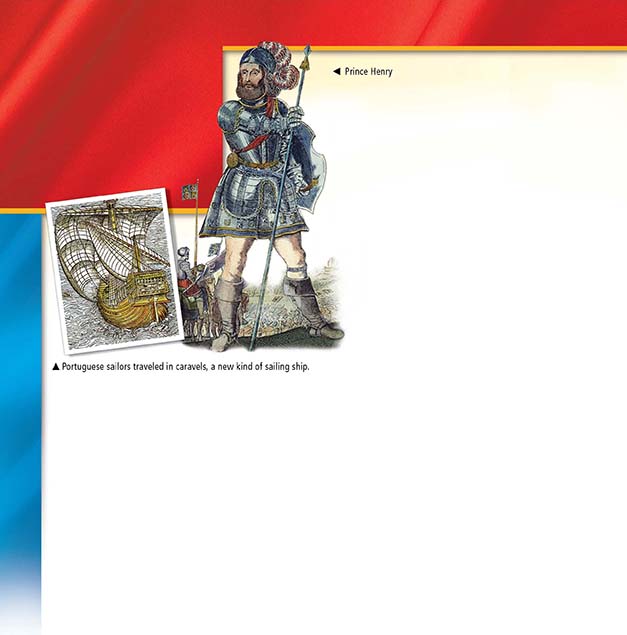SECTION 2: The Europeans

WITNESS HISTORY  AUDIO
AUDIO
Prince Henry the Navigator
For some time, Europeans dreamed of finding a shorter and easier route to Asia. Portugal led the way. Prince Henry the Navigator established a school where his sailors learned about navigation, mapmaking, and ship design. His sailors breached the unknown, taking voyages to islands off the coast of Africa. Duarte Pacheco Pereira, a Portuguese sea captain and explorer, explained the significance of the explorations in his navigation manual:
“The benefits conferred on Portugal by the virtuous Prince Henry are such that its kings and people are greatly indebted to him, for a great part of the Portuguese people now earn their livelihood in the lands which he discovered, and the kings of Portugal derive great profit from this commerce.”
—from Esmeraldo de situ orbis, by Duarte Pacheco Pereira, 1505–1508
Objectives
- Describe the conditions in Europe in the fifteenth century.
- Analyze how the changes taking place in Europe affected the inhabitants.
- Describe the major developments on the Iberian Peninsula at the end of the Middle Ages and the start of the Renaissance.
Terms and People
- Middle Ages
- Renaissance
- reconquista
- Prince Henry the Navigator
NoteTaking
Reading Skill: Summarize As you read this section, fill in a chart like the one below to describe Europe before and after the 1400s.

Why It Matters Europe in the 1400s experienced enormous cultural, economic, and technological changes. As new ideas swept the continent, some Europeans began to look beyond their shores to satisfy their growing ambitions. They were about to enter an age of discovery and exploration that would change not only Europe but much of the world as well. Section Focus Question: How did Europeans begin to explore more of the world?
Life in Europe in the 1400s
As the 1400s dawned, Europe concentrated on developing its political and cultural institutions. The earlier years of the Middle Ages, which began with the collapse of the Roman Empire, were marked by the absence of an effective central government and the constant threat of famine, disease, and foreign invasion. However, as new institutions and ideas slowly took hold, a new civilization emerged in Europe.
An Economy Based on Agriculture
Hand tools and draft animals sustained an economy that was overwhelmingly agricultural. The population was recovering from the drastic effects of bubonic plague, known as the Black Death. During the 1340s, that epidemic had killed about a third of the Europeans. The great majority of the people lived in the countryside. Cities, however, were growing, especially in northern Italy and in the Netherlands. There, the small-scale manufacturing of cloth, tools, weapons, and ceramics came




